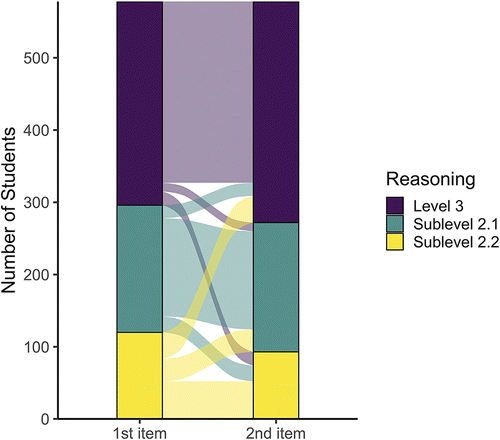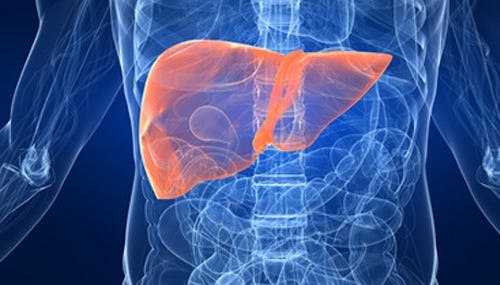Sci-Ed Update 273
TB lessons, Flow down gradients, Dancing organelles, Alcohol links to breast cancer, Grapes modify the microbiome, Death rates among Blacks are up, Sabbaticals are good, A new microscope, & more!
Lessons From the Tuberculosis Patient on the Lam
— We can learn from the case now that she's receiving treatment
Over the last few months, a woman from Tacoma, Washington has been widely featured in localopens in a new tab or window and national mediaopens in a new tab or window, including the New York Timesopens in a new tab or window, for refusing to take medication for active tuberculosis (TB).
In February 2023, a judge issued a civil warrant for her arrest. In early March, after the woman failed to attend yet another hearing, a new warrant was issued to involuntarily detain her for testing and treatment in jail. Surveillance then revealed the fugitive boarding a public bus and entering a local casino. She remained at large until recently, but the saga finally ended late last week when she was arrestedopens in a new tab or window and sent to jail where she will receive treatment.
In medicine, we're all sensitive to confidentiality. Nonetheless, I can't help wishing that someone had dug a little deeper while covering this story to help us understand her condition and why she was refusing treatment. There are a few obvious questions: Had the patient already infected others? Did she have drug-resistant TB? Had she previously suffered medication side effects? Last, but not least -- given TB's age-old stigma -- did she even understand or believe her diagnosis?
The truth is, in 21st century America where this once-widespread plague is now often "out of sight, out of mind," many doctors lack TB knowledge. On top of this, unique skills are sometimes needed to overcome the obstacles hindering prompt, effective treatment of the world's leading infectious killer.
Read more→ AandP.info/7ix
Oaks to arteries: the Physiology Core Concept of flow down gradients supports transfer of student reasoning
The Physiology Core Concept of flow down gradients is a major concept in physiology, as pressure gradients are the key driving force for the bulk flow of fluids in biology. However, students struggle to understand that this principle is foundational to the mechanisms governing bulk flow across diverse physiological systems (e.g., blood flow, phloem sap flow).
Our objective was to investigate whether bulk flow items that differ in scenario context (i.e., taxa, amount of scientific terminology, living or nonliving system) or in which aspect of the pressure gradient is kept constant (i.e., starting pressure or pressure gradient) influence undergraduate students’ reasoning.
[Our] findings are the first empirical evidence to support the claim that using Physiology Core Concept reasoning supports transfer of knowledge across different physiological systems.
Read more→ AandP.info/ecw
Dancing Organelles, AI Resources, Distracting Animations, Timed Tests & Micro-credentials | TAPP 138
In Episode 138 of The A&P Professor podcast for anatomy & physiology faculty, host Kevin Patton discusses some new thinking about organelle function, why decorative animations are not a good idea in our teaching slides, news about Wendy Riggs and the 2023 HAPS President's Medal, why I don't like timed tests, resources for AI in the curriculum, and why micro-credentials are our friends. With all that, how is that we left out any mention of carbaminohemoglobin?
To listen to this episode, click on the player (if present) or this link→ theAPprofessor.org/podcast-episode-138.html
Scientists raising awareness of alcohol and breast cancer links
A world-first trial has revealed that even very low levels of alcohol consumption can increase the risk of breast cancer. A new resource - created in collaboration with Monash University, Victoria Health and Turning Point - is seeking to tackle awareness about those risks.
Read more→ AandP.info/xwd
Grape Consumption Modulates Human Microbiome, Study Suggests

“The potential influence of the human microbiome, consisting of over 3 million genes and on the order of 1014 microorganisms, on health and well-being is profound,” said Western New England University’s Professor John Pezzuto and his colleagues.
“Based on human clinical trials, or studies conducted with animal models, results have suggested an array of responses mediated by the grape on atherosclerosis, inflammation, cancer, gastrointestinal health, CNS effects, osteoarthritis, urinary bladder function, and vision.”
Their eight-week study involved 29 healthy free-living male (age 24-55 years) and female subjects (age 29-53 years).
The authors analyzed microbiome composition as well as urinary and plasma metabolites in the participants following two-weeks of a restricted diet (day 15), two-weeks of a restricted diet with grape consumption (day 30), and four-weeks of restricted diet without grape consumption (day 60).
During the grape consumption phase of the study subjects ate 2 1/4 cups of grapes per day. Changes were seen in the amounts of bacteria detected and in enzyme levels and biological pathways. The analysis of a subgroup of subjects showed unique patterns of microbe distribution.
“Our study showed that grapes actively impact the gut microbiome causing shifts in the intricate interactive networks and thus subtly changing the gut microbiome and the resulting chemicals it produces.”
Read more→ AandP.info/667
Death Rates among Black People in the U.S. Are Rising after Falling

Eighty-two million years—that’s how much lifetime the U.S.’s Black population lost because of premature deaths between 1999 and 2020, a new study shows.
The numbers are an alarming reminder of concerning gaps in health care—and they are not entirely surprising, according to experts on racial health disparity. The study’s authors say their findings should be a “call to action” for policymakers. “There’s no biological, intrinsic reason why people with darker skin should have shorter life spans,” says Harlan Krumholz, a study co-author and a cardiologist at Yale University. But because of the systemic racism that plagues American society, “the family you’re born into in this country can have devastating consequences.”
Without change, years of Black lives will continue to slip away. “Those are years people didn’t have friends and families and loved ones,” Krumholz says.
Read more→ AandP.info/xw4
Why More Companies Should Have a Sabbatical Policy
Sabbaticals have long been thought of as an academic privilege, but a growing number of companies offer them, especially since the pandemic. DJ DiDonna, a senior lecturer at Harvard Business School and founder of The Sabbatical Project, has interviewed hundreds of workers who’ve taken them and studied organizations that offer them. From his research and his own experience on a sabbatical, DiDonna shares the surprising impacts that extended time off—paid or unpaid—can have on workers, teams, and the overall organization. And he explains how organizations can make sabbaticals work both financially and culturally.
Kevin Patton comment→ This is about “company” sabbaticals, but the same applies to faculty sabbaticals. AND academic administrator/staff sabbaticals.
Read more→ AandP.info/q2k
Inspired by the sea and the sky, a biologist invents a new kind of microscope
The device can achieve clear images using samples suspended in any kind of liquid

Anyone who’s ever owned a telescope has probably tried looking through the wrong end to see whether it works in reverse—that is, like a microscope. Spoiler alert: It doesn’t.
Now, a team of researchers inspired by the strange eyes of a sea creature has figured out a way to do it. By flipping the mirrors and lenses used in certain types of telescopes, they have created a new kind of microscope that can be used to image samples floating in any type of liquid—even the insides of transparent organs—while retaining enough light to allow for high magnification. The design could help scientists achieve high enough magnification to study tiny structures such as the long, skinny axons that connect neurons in the brain or individual proteins or RNA molecules inside cells.
“It’s nice to see even something as basic as a lens could still bring interest and there's still room there to do some work that would help a lot of people,” says Kimani Touissant, an electrical engineer at Brown University. He says the design could be useful in his work, in which he uses lasers to etch patterns into gels that mimic collagen and act as scaffolds for cells.
Read more→ AandP.info/sg8
Overuse of Some Disinfectants Can Do More Harm Than Good

A recent scientific review opens in a new tab or window of QACs (co-authored by one of us -- Amina Salamova, PhD, MS), presents evidence of suspected or known adverse health outcomes from human and laboratory animal research. These include dermal and respiratory effects, developmental and reproductive toxicity, and disruption of metabolic function associated with exposure to QACs. In addition, the review demonstrates that concentrations of QACs in the environment are already approaching levels known to be toxic to aquatic organisms and they are now detected in human blood and breast milk.
QACs are produced or imported in the U.S. at greater than 1 million pounds opens in a new tab or window per year and their use in products and subsequent concentrations in the environment are increasing. The spread of antimicrobial resistance, exacerbated by QACs, can decrease the effectiveness of disinfectant products and thus, negatively impacts antibiotic stewardship. The medical community has taken steps to reduce overuse of antibiotics, and this approach could serve as a good model for antimicrobial QACs: using them only when effective and necessary. Even better would be to replace them completely with safer products that have similar or greater efficacy to fight evolving microorganisms without leading to antimicrobial resistance.
Read more→ AandP.info/xg8
Circadian Rhythm Influenced by the Liver
The Circadian rhythm is a natural cycle of physical, mental, and behavioral changes that the body goes through in a 24-hour cycle. Circadian rhythms are mostly affected by light and darkness and are controlled by a small area in the middle of the brain. Now, a new study in mice led by researchers at the University of Queensland (UQ) has revealed liver cells influence the body’s internal circadian clock, which was previously believed to be solely controlled by the brain.
The findings are published in Science Advances in an article titled, “Mice with humanized livers reveal the role of hepatocyte clocks in rhythmic behavior.”
“The synchronization of circadian clock depends on a central pacemaker located in the suprachiasmatic nuclei,” wrote the researchers. “However, the potential feedback of peripheral signals on the central clock remains poorly characterized. To explore whether peripheral organ circadian clocks may affect the central pacemaker, we used a chimeric model in which mouse hepatocytes were replaced by human hepatocytes. Liver humanization led to reprogrammed diurnal gene expression and advanced the phase of the liver circadian clock that extended to muscle and the entire rhythmic physiology. Similar to clock-deficient mice, liver-humanized mice shifted their rhythmic physiology more rapidly to the light phase under day feeding. Our results indicate that hepatocyte clocks can affect the central pacemaker and offer potential perspectives to apprehend pathologies associated with altered circadian physiology.”
Read more→ AandP.info/pnw







